1. Name
Joan of Arc's name was written in a variety of ways, with no standard spelling before the 16th century. Her last name was usually written as "Darc" without an apostrophe, though variants such as "Tarc", "Dart", or "Day" also appeared. Her father's name was recorded as "Tart" at her trial. In a 1429 letter granting her a coat of arms, Charles VII referred to her as "Jeanne d'Ay de Domrémy." It is possible that Joan herself never heard herself called "Jeanne d'Arc," as the first written record of this name appeared in 1455, 24 years after her death.
Joan was not taught to read or write in her childhood, so she dictated her letters. Some of her later letters bear her signature, "Jehanne," suggesting she may have learned to sign her name and possibly even read. In her letters, she referred to herself as Jeanne la PucelleFrench ("Joan the Maiden") or simply la PucelleFrench ("the Maiden"), emphasizing her virginity. By the 16th century, she became widely known as the "Maid of Orleans."
2. Background
This section details Joan of Arc's birth circumstances, her family background, and the historical context of the Hundred Years' War during her lifetime.
2.1. Birth and Family
Joan of Arc was born around 1412 in Domrémy, a small village in the Meuse valley located in what is now the Vosges department in northeastern France. Her exact date of birth is unknown, and her statements about her age were often vague. Her parents were Jacques d'Arc and Isabelle Romée. Joan had three brothers and a sister. Her father was a peasant farmer who owned about 50 acre (50 acre) of land. He supplemented the family's income by serving as a village official, responsible for collecting taxes and leading the local watch.
The village of Domrémy lay mostly within the Duchy of Bar, whose feudal status was somewhat unclear. Despite being surrounded by pro-Burgundian territories, the people of Domrémy remained loyal to the Armagnac (French royalist) cause. By 1419, the ongoing war had begun to affect the region. In 1425, Domrémy was attacked by Burgundian forces, resulting in the theft of cattle. This incident fueled a strong sentiment among the villagers that the English must be expelled from France to achieve peace. Joan reportedly had her first vision after this raid.
2.2. Historical Context: The Hundred Years' War
Joan of Arc was born during the Hundred Years' War, a prolonged conflict between England and France that began in 1337. The war originated from disputes over English territories in France and English claims to the French throne. Most of the fighting had taken place on French soil, devastating its economy. At the time of Joan's birth, France was deeply divided politically. King Charles VI suffered from recurring bouts of mental illness, often rendering him incapable of ruling. This created a power vacuum, leading to a bitter quarrel over the regency of France between his brother, Louis, Duke of Orléans, and his cousin, John the Fearless, Duke of Burgundy.
In 1407, the Duke of Burgundy ordered the assassination of the Duke of Orléans, precipitating a full-blown civil war. Charles of Orléans succeeded his father as duke at the age of 13 and was placed under the custody of Bernard, Count of Armagnac. His supporters became known as the "Armagnacs," while those who backed the Duke of Burgundy were called "Burgundians." The future French king, Charles VII, became the Dauphin (heir to the throne) after the deaths of his four older brothers and was closely associated with the Armagnac faction.
Henry V of England exploited France's internal divisions, invading in 1415 and securing a decisive victory at the Battle of Agincourt. The Burgundians captured Paris in 1418. In 1419, the Dauphin offered a truce to negotiate peace with the Duke of Burgundy, but the duke was assassinated by Charles's Armagnac partisans during the negotiations. The new Duke of Burgundy, Philip the Good, subsequently allied with the English. Charles VI accused the Dauphin of murdering the Duke of Burgundy and declared him unfit to inherit the French throne. During a period of illness, Charles's wife, Isabeau of Bavaria, signed the Treaty of Troyes, which arranged the marriage of their daughter Catherine of Valois to Henry V and granted the succession of the French throne to their heirs, effectively disinheriting the Dauphin. This fueled rumors that the Dauphin was not Charles VI's legitimate son but the offspring of an adulterous affair between Isabeau and the murdered Duke of Orléans.
In 1422, Henry V and Charles VI died within two months of each other. The 9-month-old Henry VI of England became the nominal heir of the Anglo-French dual monarchy as stipulated in the treaty, but the Dauphin also maintained his claim to the French throne. Henry V's brothers, John of Lancaster, 1st Duke of Bedford, and Humphrey, Duke of Gloucester, continued the English conquest of France. Most of northern France, including Paris, and parts of southwestern France were under Anglo-Burgundian control. The Burgundians controlled Reims, the traditional site for the coronation of French kings. Charles had not yet been crowned, and doing so at Reims would be crucial to legitimize his claim to the throne. By July 1428, the English had begun to surround Orléans, strategically isolating it from the rest of Charles's territory by capturing many of the smaller bridge towns along the Loire River. Orléans was critically important as the last obstacle to an assault on the remaining French heartland. The fate of Orléans was seen as determining the fate of the entire kingdom.
3. Early Life and Divine Calling
This section explores Joan of Arc's formative years, her claims of divine communication, and her initial efforts to gain support for her mission.
3.1. Childhood and Visions
In her youth, Joan performed typical household chores, spun wool, assisted her father in the fields, and tended to their animals. Her mother provided Joan's religious education. Domrémy was a small, isolated village, and while surrounded by pro-Burgundian lands, its people remained fiercely loyal to the Armagnac cause. The war significantly impacted the area, with Domrémy itself being attacked in 1425, leading to the theft of cattle and the burning of the village in a later raid in July 1428, forcing Joan's family and other townspeople to flee. This direct experience of the war's devastation fueled a strong desire among the villagers to see the English expelled from France.
Joan later testified that when she was about 13 years old, around 1425, a figure she identified as archangel Michael, surrounded by angels, appeared to her in the garden. She stated that after this vision, she wept because she wished they would take her with them. Throughout her life, she continued to experience visions of Saint Michael, who was a patron saint of the Domrémy area and regarded as a defender of France. She claimed these visions occurred frequently, often when church bells were rung. Her visions also included Saint Margaret and Saint Catherine, likely Margaret of Antioch and Catherine of Alexandria, who were well-known in the region. Both were revered as virgin saints who resisted powerful enemies, were tortured and martyred for their beliefs, and maintained their virtue until death. Joan testified that she swore a vow of virginity to these voices. When a young man from her village accused her of breaking a marriage promise, Joan denied making any such promises, and his case was dismissed by an ecclesiastical court.
3.2. Seeking Support at Vaucouleurs
During Joan's youth, a prophecy circulated in the French countryside, based on the visions of Marie Robine of Avignon, which foretold that an armed virgin would emerge to save France. Another prophecy, attributed to Merlin, stated that a virgin carrying a banner would end France's suffering. Joan implied that she was this prophesied maiden, reminding those around her of a saying that France would be destroyed by a woman (often interpreted as Isabeau of Bavaria) but restored by a virgin.
In May 1428, Joan approached her uncle to take her to the nearby town of Vaucouleurs, where she sought an armed escort from the garrison commander, Robert de Baudricourt, to the Armagnac court at Chinon. Baudricourt initially refused her harshly and sent her home. However, she returned to Vaucouleurs in January 1429. Although her petition was again refused, she gained the support of two of Baudricourt's soldiers, Jean de Metz and Bertrand de Poulengy. Around this time, she was summoned to Nancy under safe conduct by Charles II, Duke of Lorraine, who had heard of Joan during her stay in Vaucouleurs. The duke was ill and believed she might possess supernatural powers to cure him. Joan offered no cures but instead reprimanded him for living with his mistress.
Baudricourt eventually agreed to a third meeting with Joan in February 1429, around the time the English captured an Armagnac relief convoy at the Battle of the Herrings during the Siege of Orléans. Her persistent conversations, coupled with the support of Metz and Poulengy, convinced Baudricourt to allow her to travel to Chinon for an audience with the Dauphin. Joan journeyed with an escort of six soldiers. Before leaving, she adopted men's clothes, provided by her escorts and the people of Vaucouleurs, and continued to wear them for the rest of her life.
3.3. Meeting Charles VII at Chinon
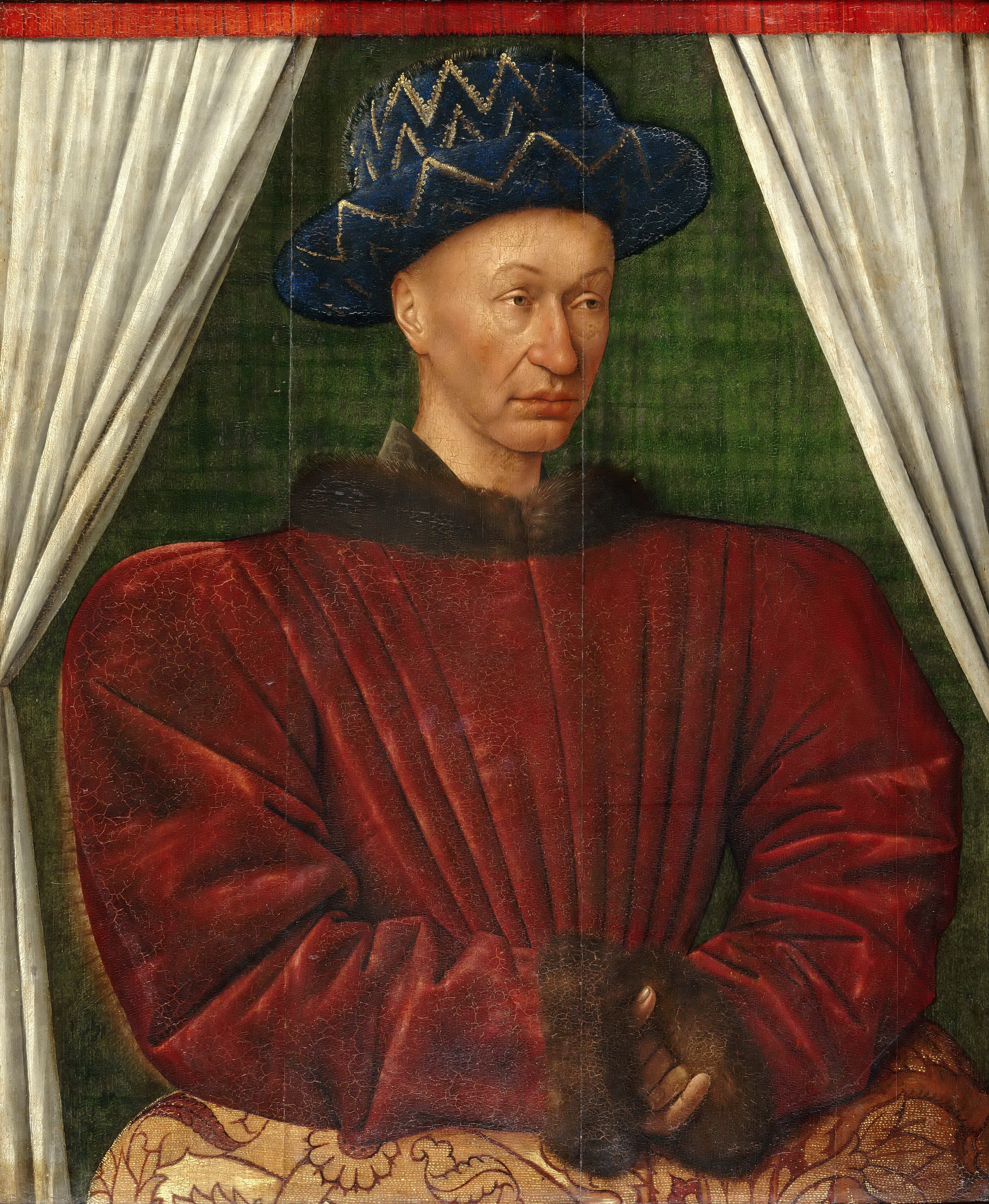
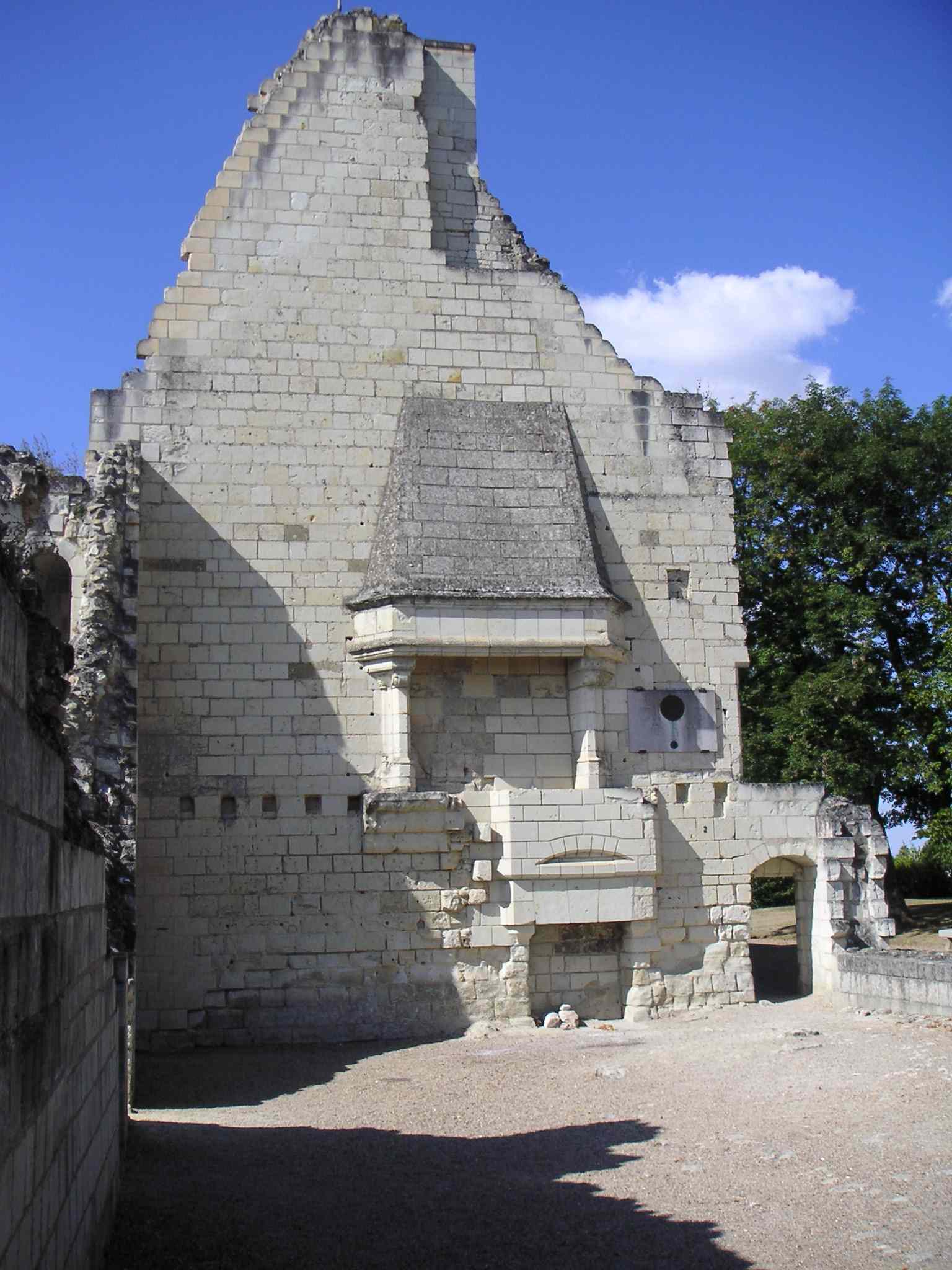
Charles VII met Joan for the first time at the Royal Court in Chinon in late February or early March 1429. Joan was 17 years old, and Charles was 26. She informed him that she had come to lift the Siege of Orléans and to lead him to Reims for his coronation. They had a private exchange that left a strong impression on Charles. Jean Pasquerel, Joan's confessor, later testified that Joan reassured the Dauphin that he was indeed Charles VI's legitimate son and the rightful king.
Despite this, Charles and his council sought further assurance. They sent Joan to Poitiers to be examined by a council of theologians, who, after their assessment, declared her to be a good person and a good Catholic. While they did not definitively rule on the source of Joan's inspiration, they agreed that sending her to Orléans could be beneficial to the king and would serve as a test of whether her inspiration was truly divine. Joan was then sent to Tours for a physical examination by women, directed by Charles's mother-in-law, Yolande of Aragon, who verified her virginity. This was done to establish if she could indeed be the prophesied virgin savior of France, to demonstrate the purity of her devotion, and to ensure she had not consorted with the Devil.
Reassured by the results of these examinations, the Dauphin commissioned plate armor for her. Joan designed her own banner and had a sword retrieved for her from beneath the altar in the church at Sainte-Catherine-de-Fierbois. Around this time, she began calling herself "Joan the Maiden," emphasizing her virginity as a sign of her mission.
Before Joan's arrival in Chinon, the Armagnac strategic situation was dire but not entirely hopeless. Their forces were prepared for a prolonged siege at Orléans. The Burgundians had recently withdrawn from the siege due to territorial disagreements, and the English were debating whether to continue their offensive. Nevertheless, after almost a century of war, the Armagnac forces were deeply demoralized. Once Joan joined the Dauphin's cause, her personality and unwavering belief in the divine origin of her mission began to raise their spirits, inspiring devotion and the hope of divine assistance. Her conviction transformed the long-standing Anglo-French conflict over inheritance into a religious war. Before embarking on the journey to Orléans, Joan dictated a letter to the Duke of Bedford, warning him that she was sent by God to drive him out of France.
4. Military Campaigns
This section details Joan of Arc's military leadership, her strategic decisions, and the key battles and events that marked her brief but impactful career.
4.1. Siege of Orléans
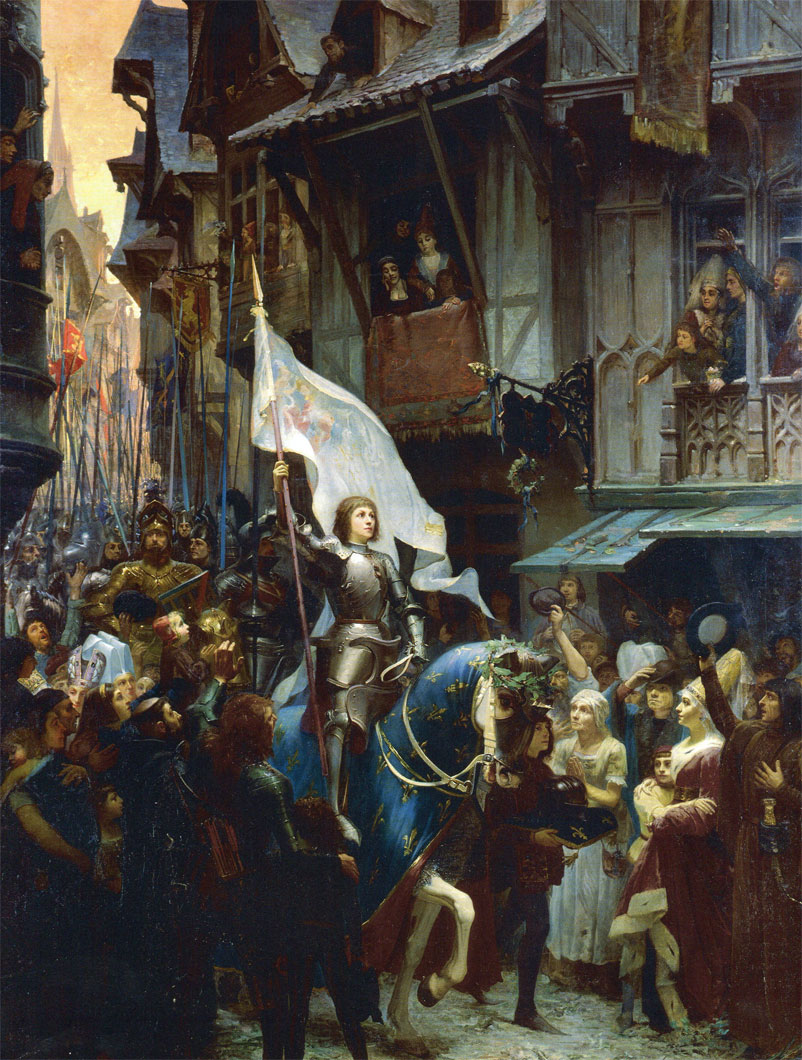
In the last week of April 1429, Joan departed from Blois as part of an army carrying supplies for the relief of Orléans. She arrived there on April 29 and met the commander, Jean de Dunois, also known as the Bastard of Orléans. Orléans was not entirely cut off, and Dunois managed to get her into the city, where she was enthusiastically greeted.
Initially, Joan was treated as a figurehead meant solely to boost morale, flying her banner on the battlefield. She was not given any formal command or included in military councils. However, she quickly gained the support of the Armagnac troops. She consistently appeared where the fighting was most intense, often staying with the front ranks, and instilled in the soldiers a sense that she was fighting for their salvation. Armagnac commanders sometimes accepted her advice, particularly regarding which positions to attack, when to continue an assault, and how to position artillery.
On May 4, the Armagnacs launched an offensive, attacking the outlying bastille de Saint-LoupFrench (fortress of Saint Loup), located a mile east of Orléans. Upon learning of the attack, Joan rode out with her banner to the battle site. She arrived as the Armagnac soldiers were retreating after a failed assault. Her appearance rallied the soldiers, who re-engaged and successfully took the fortress. On May 5, no combat occurred as it was Ascension Thursday, a feast day. Joan dictated another letter to the English, warning them to leave France, and had it delivered via a crossbow bolt.
The Armagnacs resumed their offensive on May 6, capturing Saint-Jean-le-Blanc, which the English had deserted. The Armagnac commanders wished to halt their advance, but Joan urged them to launch an assault on les Augustins, an English fortress built around a monastery. After its capture, the commanders again sought to consolidate their gains, but Joan once more argued for continuing the offensive. On the morning of May 7, the Armagnacs attacked the main English stronghold, les Tourelles. Joan was wounded by an arrow between the neck and shoulder while holding her banner in the trench on the south bank of the river. Despite her injury, she later returned to encourage the final assault that successfully took the fortress. The English retreated from Orléans on May 8, ending the siege.
At Chinon, Joan had declared that she was sent by God. At Poitiers, when asked for a sign to demonstrate this claim, she replied that it would be given if she were brought to Orléans. The successful lifting of the siege was widely interpreted as that sign. Prominent clergy, such as Jacques Gélu, Archbishop of Embrun, and the theologian Jean Gerson, wrote treatises supporting Joan after this victory. In stark contrast, the English viewed this peasant girl's ability to defeat their armies as proof that she was possessed by the Devil.
4.2. Loire Campaign
After the success at Orléans, Joan insisted that the Armagnac forces should advance promptly toward Reims to crown the Dauphin. Charles allowed her to accompany the army under the command of John II, Duke of Alençon, who collaborated effectively with Joan and frequently heeded her advice. Before advancing toward Reims, the Armagnacs needed to recapture the bridge towns along the Loire River: Jargeau, Meung-sur-Loire, and Beaugency. This would clear the way for Charles and his entourage, who would need to cross the Loire near Orléans to travel from Chinon to Reims.
The campaign to clear the Loire towns began on June 11 when the Armagnac forces, led by Alençon and Joan, arrived at Jargeau and compelled the English to withdraw inside the town's walls. Joan sent a message to the English demanding their surrender, which they refused. She then advocated for a direct assault on the walls the following day. By the end of the day, Jargeau was taken. The Armagnacs took few prisoners, and many English soldiers who surrendered were killed. During this campaign, Joan continued to serve in the thick of battle. She began scaling a siege ladder with her banner in hand, but before she could climb the wall, she was struck by a stone that split her helmet.
Alençon and Joan's army advanced on Meung-sur-Loire. On June 15, they seized control of the town's bridge, and the English garrison retreated to a castle on the Loire's north bank. Most of the army continued along the south bank of the Loire to besiege the castle at Beaugency. Meanwhile, the English army from Paris, under the command of Sir John Fastolf, had linked up with the garrison in Meung and traveled along the north bank of the Loire to relieve Beaugency. Unaware of this, the English garrison at Beaugency surrendered on June 18.
The main English army retreated toward Paris. Joan urged the Armagnacs to pursue them, and the two armies clashed at the Battle of Patay later that day. The English had prepared their forces to ambush an Armagnac attack with hidden archers, but the Armagnac vanguard detected and scattered them. A rout ensued that decimated the English army. Fastolf escaped with a small band of soldiers, but many English leaders were captured. Joan arrived at the battlefield too late to participate in the decisive action, but her encouragement to pursue the English had made the victory possible.
4.3. March to Reims and Coronation
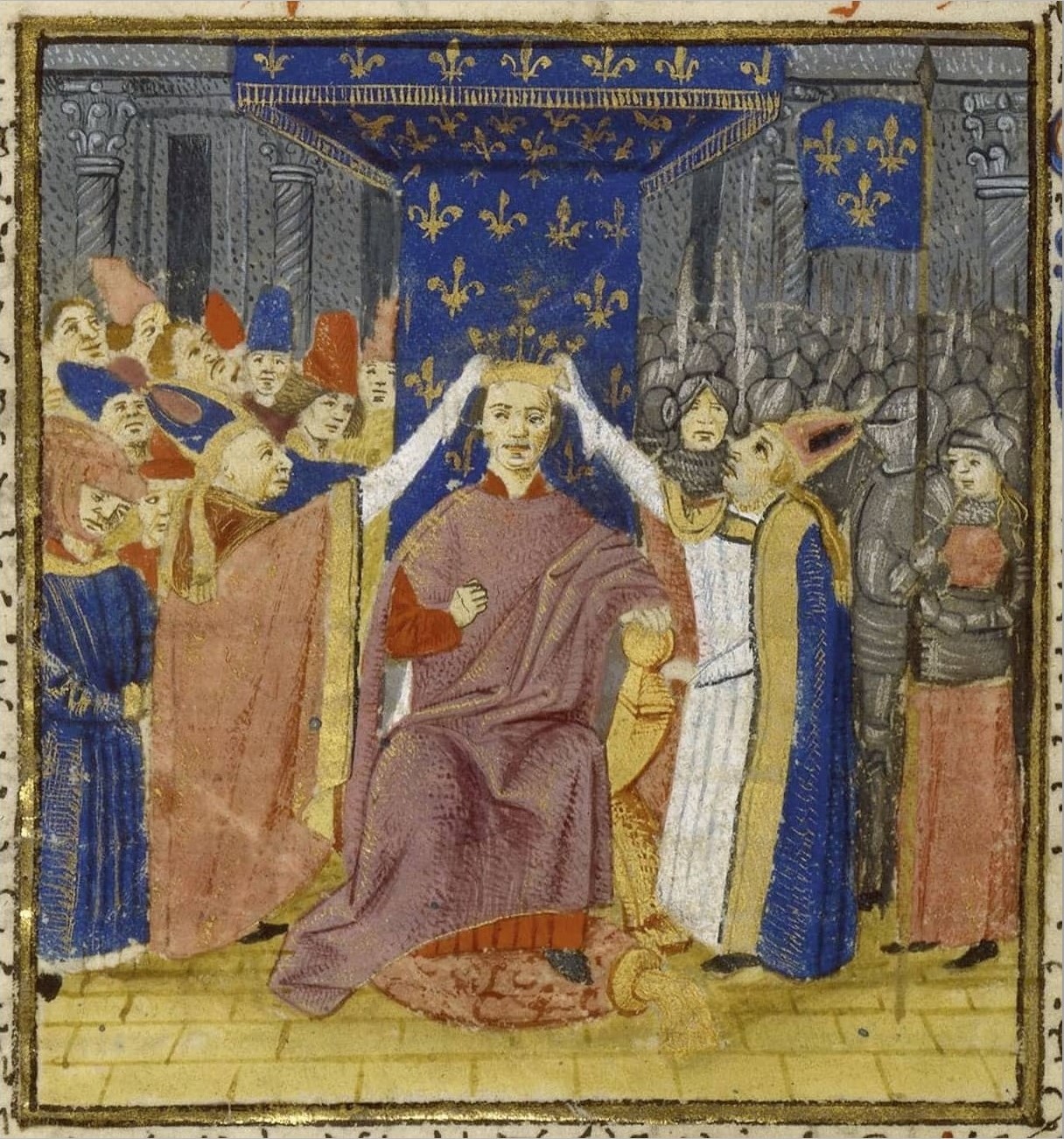
After the destruction of the English army at Patay, some Armagnac leaders argued for an invasion of English-held Normandy. However, Joan remained insistent that Charles must be crowned. The Dauphin agreed, and the army departed from Gien on June 29 to march on Reims. The advance was largely unopposed. The Burgundian-held town of Auxerre surrendered on July 3 after three days of negotiations, and other towns in the army's path returned to Armagnac allegiance without resistance.
Troyes, which had a small garrison of English and Burgundian troops, was the only town to offer resistance. After four days of negotiation, Joan ordered the soldiers to fill the city's moat with wood and directed the placement of artillery. Fearing an assault, Troyes negotiated a surrender. The French army faced a severe food supply crisis as they approached Troyes. This was alleviated by the timely harvest of short-season beans, which a traveling friar named Brother Richard had convinced the local population to plant while preaching about the end of the world.
Reims opened its gates on July 16, 1429. Charles, Joan, and the army entered in the evening, and Charles's consecration took place the following morning, July 17. Joan was given a place of honor at the ceremony and declared that God's will had been fulfilled.
4.4. Siege of Paris
After the consecration, the royal court negotiated a 15-day truce with the Duke of Burgundy, who promised to arrange the transfer of Paris to the Armagnacs while continuing negotiations for a definitive peace. However, Burgundy reneged on his promise at the end of the truce. Joan and the Duke of Alençon favored a swift march on Paris, but divisions within Charles's court and ongoing peace negotiations with Burgundy led to a slow advance.
As the Armagnac army approached Paris, many towns along the way surrendered without a fight. On August 15, the English forces under the Duke of Bedford confronted the Armagnacs near Montépilloy in a fortified position that the Armagnac commanders deemed too strong to assault. Joan rode out in front of the English positions to try to provoke them into attacking. They refused, resulting in a standoff. The English retreated the following day. The Armagnacs continued their advance and launched an assault on Paris on September 8. During the fighting, Joan was wounded in the leg by a crossbow bolt. She remained in a trench beneath the city walls until she was rescued after nightfall. The Armagnacs suffered 1,500 casualties.
The following morning, Charles ordered an end to the assault. Joan was displeased and argued that the attack should be continued. She and Alençon had made fresh plans to attack Paris, but Charles dismantled a bridge approaching Paris that was necessary for the attack, forcing the Armagnac army to retreat. After the defeat at Paris, Joan's role in the French court diminished. Her aggressive independence did not align with the court's emphasis on finding a diplomatic solution with Burgundy, and her involvement in the defeat at Paris reduced the court's faith in her. Scholars at the University of Paris argued that she failed to take Paris because her inspiration was not divine. In September, Charles disbanded the army, and Joan was not permitted to work with the Duke of Alençon again.
4.5. Later Campaigns and Capture
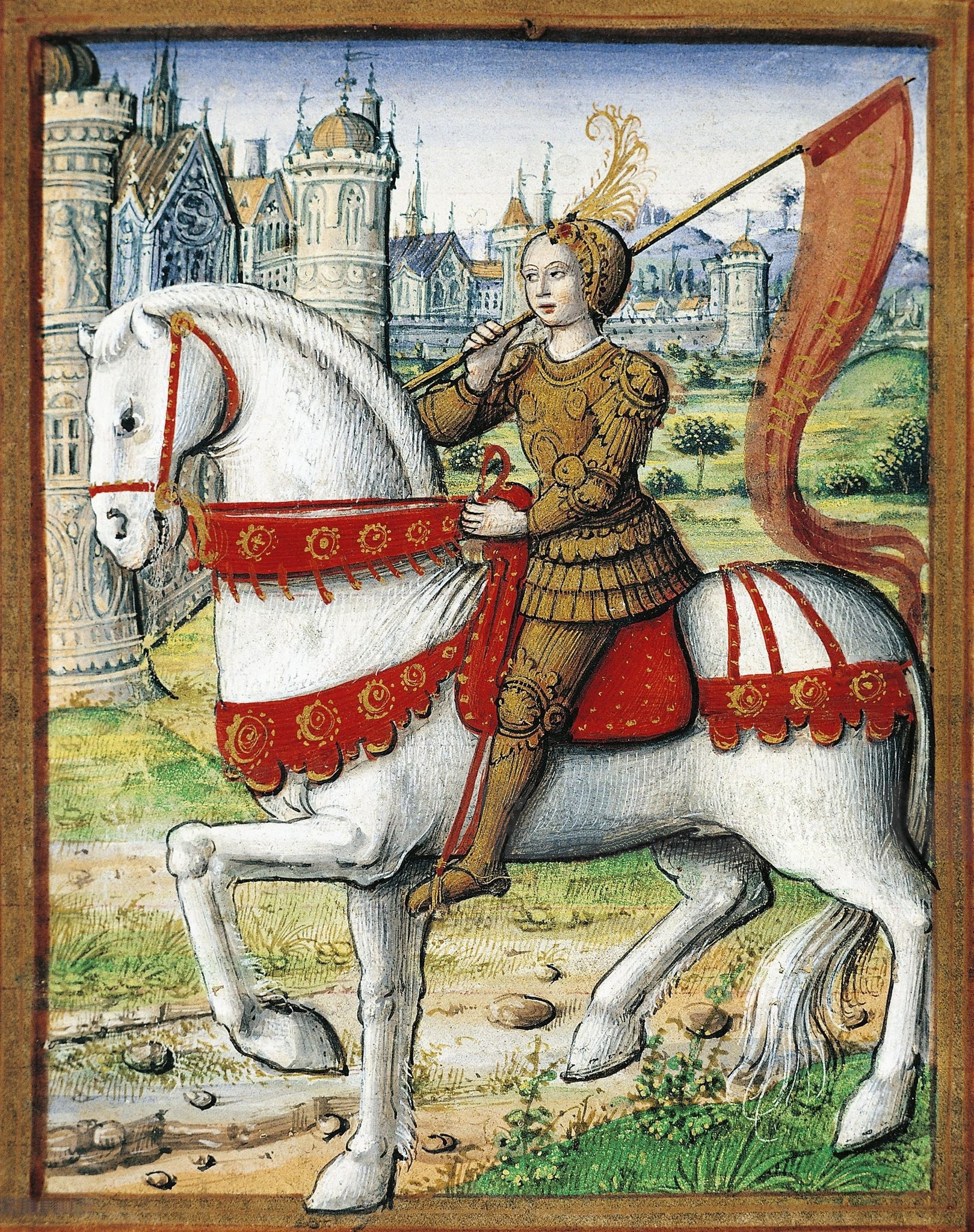
In October, Joan was dispatched as part of a force to attack the territory of Perrinet Gressart, a mercenary who had served the Burgundians and English. The army besieged Saint-Pierre-le-Moûtier, which fell after Joan encouraged a direct assault on November 4. The army then unsuccessfully attempted to take La-Charité-sur-Loire in November and December, and had to abandon their artillery during the retreat. This defeat further diminished Joan's reputation.
Joan returned to court at the end of December, where she learned that she and her family had been ennobled by Charles as a reward for her services to him and the kingdom. Before the September attack on Paris, Charles had negotiated a four-month truce with the Burgundians, which was extended until Easter 1430. During this truce, the French court had little need for Joan.
The Duke of Burgundy began to reclaim towns that had been ceded to him by treaty but had not submitted. Compiègne was one such town, among many in areas that the Armagnacs had recaptured over the previous months. Joan set out with a company of volunteers at the end of March 1430 to relieve the town, which was under siege. This expedition did not have the explicit permission of Charles, who was still observing the truce. Some writers suggest that Joan's expedition to Compiègne without documented court permission was a desperate and treasonable action, while others argue that she could not have launched the expedition without the financial support of the court.
In April, Joan arrived at Melun, which had expelled its Burgundian garrison. As Joan advanced, her force grew as other commanders joined her. Joan's troops advanced to Lagny-sur-Marne and defeated an Anglo-Burgundian force commanded by the mercenary Franquet d'Arras, who was captured. Typically, he would have been ransomed or exchanged by the capturing force, but Joan allowed the townspeople to execute him after a trial.
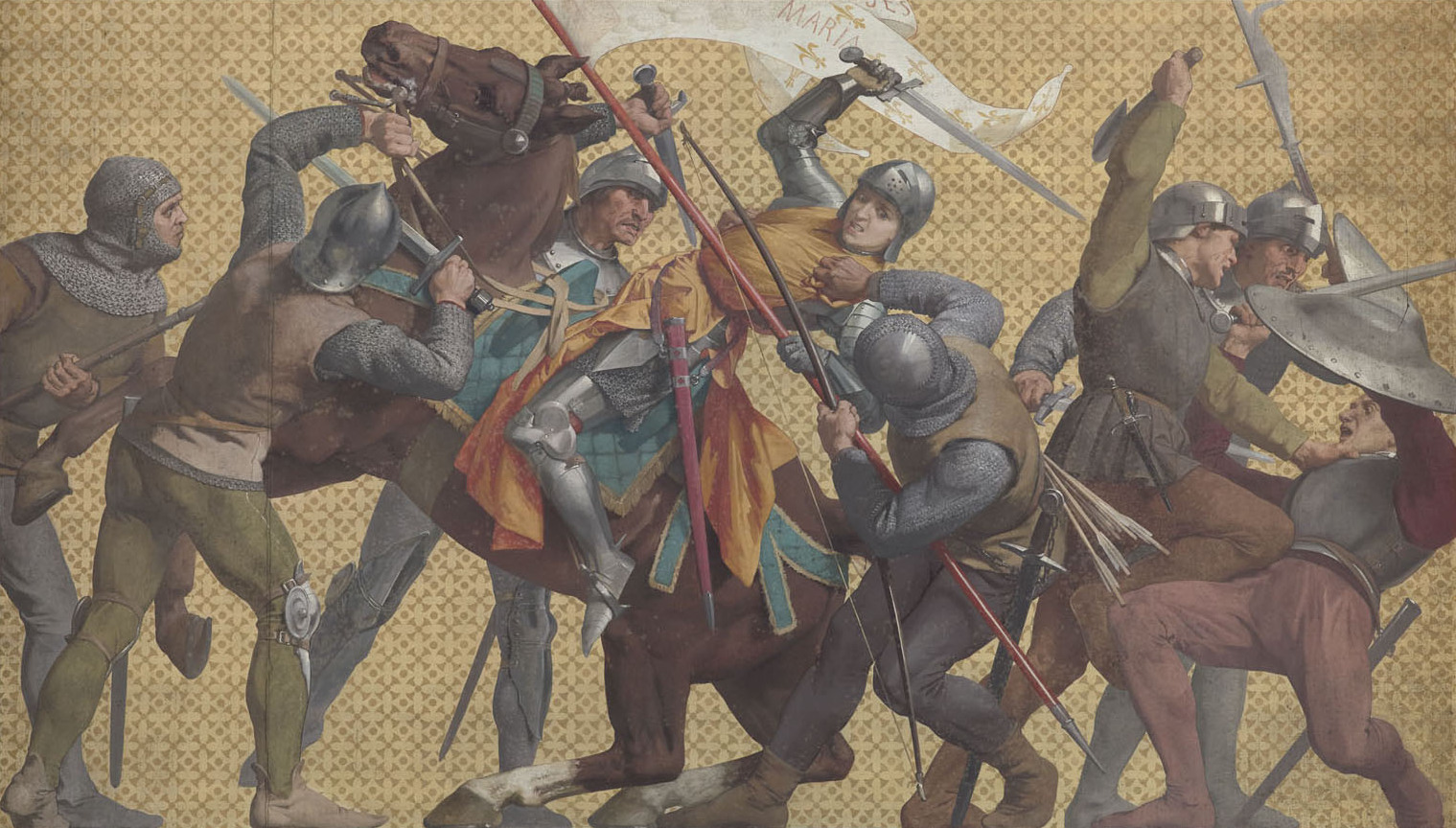
Joan reached Compiègne on May 14. After defensive forays against the Burgundian besiegers, she was forced to disband the majority of the army because it had become too difficult for the surrounding countryside to support them. Joan and about 400 of her remaining soldiers entered the town.
On May 23, 1430, Joan accompanied an Armagnac force that sortied from Compiègne to attack the Burgundian camp at Margny, northeast of the town. The attack failed, and Joan was captured. She agreed to surrender to a pro-Burgundian nobleman named Lyonnel de Wandomme, a member of Jean de Luxembourg's contingent. He quickly moved her to his castle at Beaulieu-les-Fontaines, near Noyes. After her first attempt to escape, she was transferred to Beaurevoir Castle. She made another escape attempt there, jumping from a window of a tower and landing in a dry moat; she was injured but survived. In November, she was moved to the Burgundian town of Arras.
The English and Burgundians rejoiced that Joan had been removed as a military threat. The English negotiated with their Burgundian allies to pay Joan's ransom and transfer her to their custody. Bishop Pierre Cauchon of Beauvais, a partisan supporter of the Duke of Burgundy and the English crown, played a prominent part in these negotiations, which were completed in November. The final agreement stipulated that the English would pay 10.00 K Livre tournois to obtain her from Luxembourg. After the English paid the ransom, they moved Joan to Rouen, their main headquarters in France. There is no evidence that Charles tried to save Joan once she was transferred to the English.
5. Trial and Execution
This section details the politically motivated trial of Joan of Arc, the charges brought against her, her temporary recantation, and her ultimate execution.
5.1. The Trial for Heresy
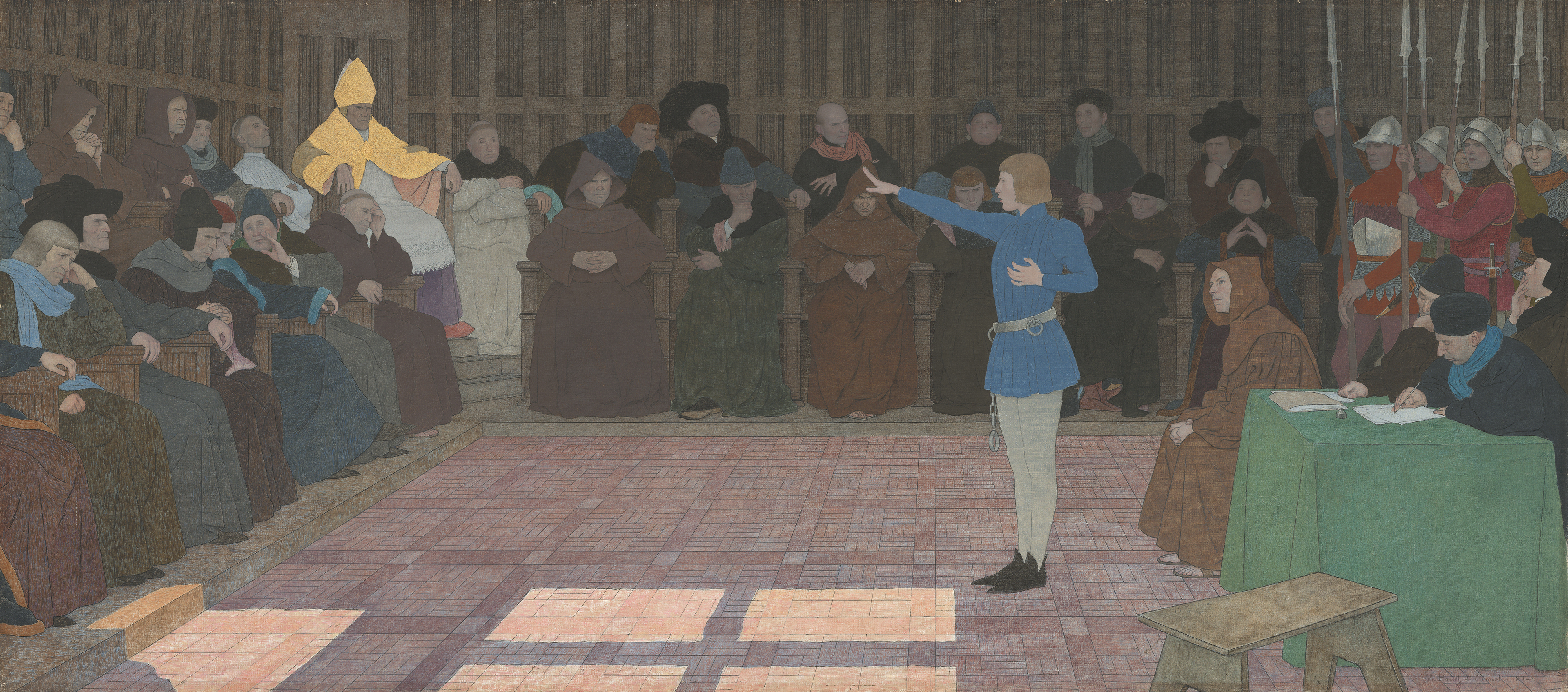
Joan was put on trial for heresy in Rouen on January 9, 1431. She was accused of having blasphemed by wearing men's clothes, of acting upon visions that were demonic, and of refusing to submit her words and deeds to the Church because she claimed she would be judged by God alone. Joan's captors downplayed the secular aspects of her trial by submitting her judgment to an ecclesiastical court, but the trial was undeniably politically motivated. Joan testified that her visions had instructed her to defeat the English and crown Charles, and her success was argued to be evidence that she was acting on behalf of God. If unchallenged, her testimony would invalidate the English claim to the rule of France and undermine the University of Paris, which supported the dual monarchy ruled by an English king.
The verdict was a foregone conclusion. Joan's guilt could be used to compromise Charles's claims to legitimacy by showing that he had been consecrated by the act of a heretic. Cauchon served as the ordinary judge of the trial. The English subsidized the trial, including payments to Cauchon and Jean Le Maître, who represented the Inquisitor of France. All but 8 of the 131 clergy who participated in the trial were French, and two-thirds were associated with the University of Paris, though most were pro-Burgundian and pro-English.
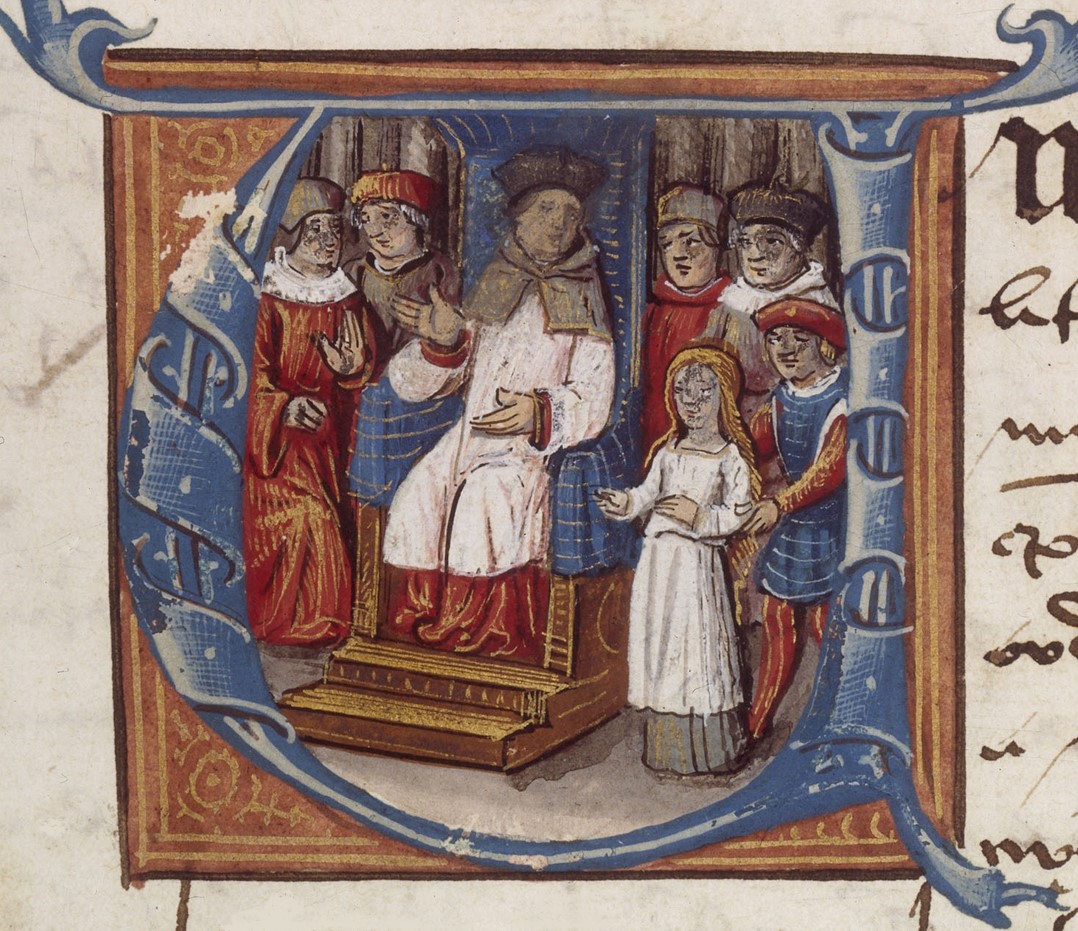
Cauchon attempted to follow correct inquisitorial procedure, but the trial had many irregularities. Joan should have been in the hands of the Church during the trial and guarded by women, but instead, she was imprisoned by the English and guarded by male soldiers under the command of the Duke of Bedford. Contrary to canon law, Cauchon had not established Joan's infamy before proceeding with the trial. Joan was not read the charges against her until well after her interrogations began. The procedures were below inquisitorial standards, subjecting Joan to lengthy interrogations without legal counsel. One of the trial clerics stepped down because he felt the testimony was coerced and its intention was to entrap Joan; another challenged Cauchon's right to judge the trial and was jailed. There is evidence that the trial records were falsified.
During the trial, Joan demonstrated remarkable control and intellect. She managed to induce her interrogators to ask questions sequentially rather than simultaneously, to refer back to their records when appropriate, and to end the sessions when she requested. Witnesses at the trial were impressed by her prudence when answering questions. For example, in one exchange, she was asked if she knew she was in God's grace. This question was a scholarly trap, as Church doctrine held that nobody could be certain of being in God's grace. If she answered positively, she would have been charged with heresy; if negatively, she would have confessed her own guilt. Joan skillfully avoided the trap by stating that if she was not in God's grace, she hoped God would put her there, and if she was in God's grace, then she hoped she would remain so. One of the court notaries at her trial later testified that the interrogators were stunned by her answer. To convince her to submit, Joan was shown instruments of torture. When she refused to be intimidated, Cauchon met with about a dozen assessors (clerical jurors) to vote on whether she should be tortured. The majority decided against it.
5.2. Abjuration and Relapse
In early May, Cauchon asked the University of Paris to deliberate on 12 articles summarizing the accusation of heresy. The university approved the charges. On May 23, Joan was formally admonished by the court. The next day, she was taken to the churchyard of the abbey of Saint-Ouen for public condemnation. As Cauchon began to read Joan's sentence, she agreed to submit. She was presented with an abjuration document, which included an agreement that she would not bear arms or wear men's clothing. It was read aloud to her, and she signed it. The details of Joan's abjuration are unclear because the original document, which may have been only eight lines long, was replaced with a longer one in the official record.
Public heresy was a capital crime, in which an unrepentant or relapsed heretic could be handed over to the judgment of the secular courts and punished by death. Having signed the abjuration, Joan was no longer an unrepentant heretic but could be executed if convicted of relapsing into heresy. As part of her abjuration, Joan was required to renounce wearing men's clothes. She exchanged her clothes for a woman's dress and allowed her head to be shaved. However, she was returned to her cell and kept in chains instead of being transferred to an ecclesiastical prison, which would have provided female guards.
Witnesses at the rehabilitation trial stated that Joan was subjected to mistreatment and rape attempts, including one by an English noble, and that guards deliberately placed men's clothes in her cell, forcing her to wear them. Cauchon was notified that Joan had resumed wearing male clothing. He sent clerics to admonish her to remain in submission, but the English prevented them from visiting her.
5.3. Execution by Burning
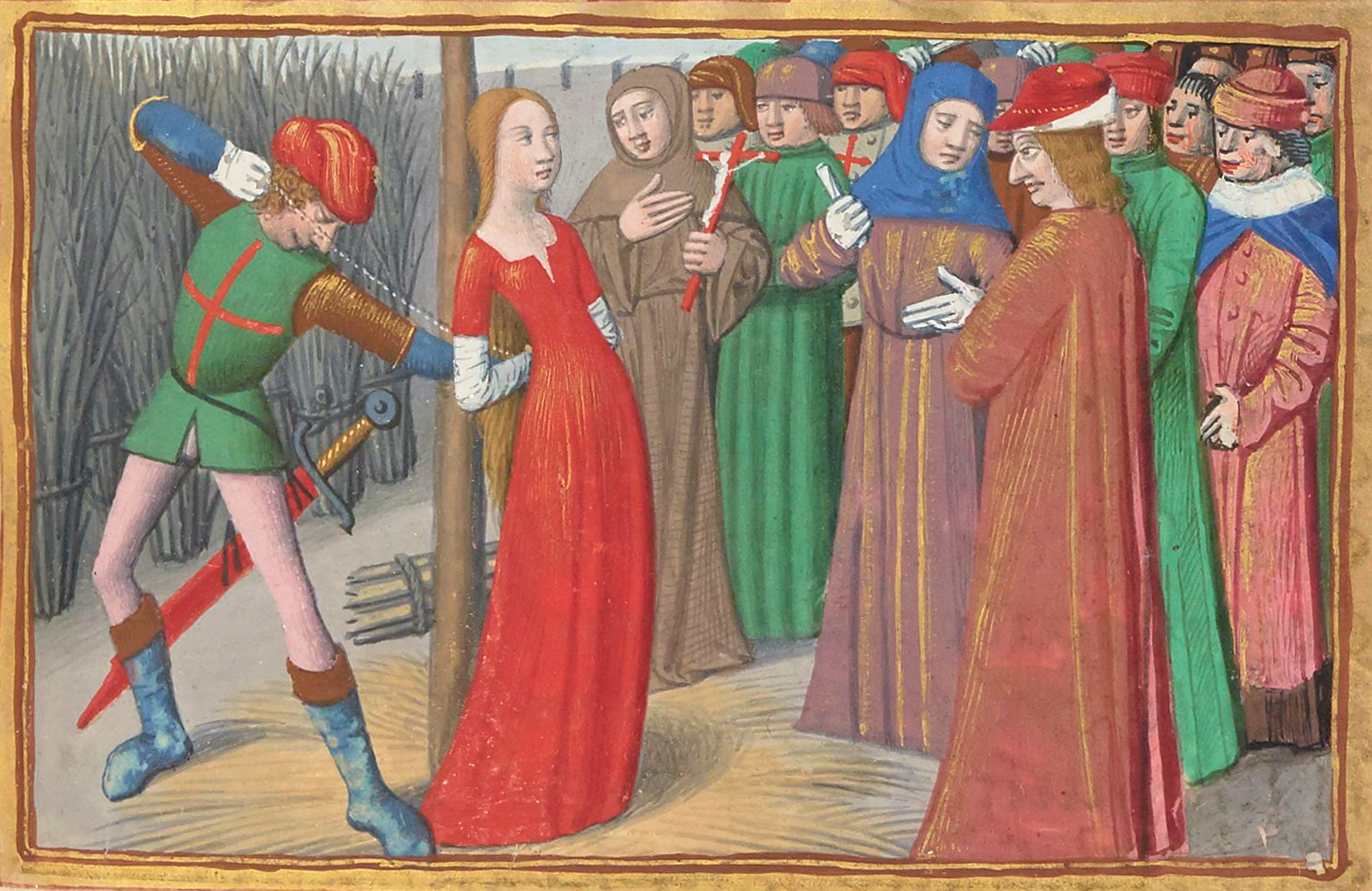
On May 28, Cauchon went to Joan's cell, accompanied by several other clerics. According to the trial record, Joan stated that she had resumed wearing men's clothes because it was more fitting that she dress like a man while being held with male guards. She also claimed that the judges had broken their promise to let her go to mass and to release her from her chains. She stated that if they fulfilled their promises and placed her in a decent prison, she would be obedient. When Cauchon questioned her about her visions, Joan stated that the voices had blamed her for abjuring out of fear, and that she would not deny them again. As Joan's abjuration had required her to deny her visions, this statement was sufficient to convict her of relapsing into heresy and condemn her to death.
The next day, 42 assessors were summoned to decide Joan's fate. Two recommended that she be abandoned to the secular courts immediately; the rest recommended that the abjuration be read to her again and explained. In the end, they voted unanimously that Joan was a relapsed heretic and should be abandoned to the secular power, the English, for punishment.
At about the age of 19, Joan was executed on May 30, 1431. In the morning, she was allowed to receive the sacraments, despite the court process typically denying them to heretics. She was then taken to Rouen's Vieux-Marché (Old Marketplace), where her sentence of condemnation was publicly read. At this point, she should have been handed over to the appropriate authority, the bailiff of Rouen, for secular sentencing, but instead, she was delivered directly to the English. She was tied to a tall plastered pillar for execution by burning. She asked to view a cross as she died and was given one by an English soldier made from a stick, which she kissed and placed next to her chest. A processional crucifix was fetched from the church of Saint-Saveur. She embraced it before her hands were bound, and it was held before her eyes during her execution. Witnesses reported her repeatedly crying out the name of Jesus and praying for heavenly saints. After her death, her remains were publicly displayed to ensure no one could claim she had survived, then burned twice more until reduced to ashes to prevent the collection of relics. Her ashes were then thrown into the Seine River from a bridge called Matilda. The executioner, Geoffroy Therage, later confessed to feeling "great fear of being damned" for burning a holy woman.
6. Rehabilitation and Legacy
This section covers the posthumous efforts to clear Joan of Arc's name, her eventual canonization, and her enduring impact as a national symbol and cultural icon.
6.1. Rehabilitation Trial
Joan's execution did not alter the military situation. Her triumphs had significantly boosted Armagnac morale, and the English were unable to regain momentum. Charles remained king of France, despite a rival coronation held for the 10-year-old Henry VI of England at Notre-Dame cathedral in Paris in 1431. In 1435, the Burgundians signed the Treaty of Arras, abandoning their alliance with England. Twenty-two years after Joan's death, the war ended with a French victory at the Battle of Castillon in 1453, and the English were expelled from all of France except Calais.
Joan's execution created a political liability for Charles, as it implied that his consecration as the king of France had been achieved through the actions of a heretic. On February 15, 1450, a few months after he regained Rouen, Charles ordered Guillaume Bouillé, a theologian and former rector of the University of Paris, to open an inquest. In a brief investigation, Bouillé interviewed seven witnesses of Joan's trial and concluded that the judgment of Joan as a heretic was arbitrary. She had been a prisoner of war treated as a political prisoner and was put to death without basis. Bouillé's report could not overturn the verdict but paved the way for the later retrial.
In 1452, a second inquest into Joan's trial was opened by Cardinal Guillaume d'Estouteville, papal legate and relative of Charles, and Jean Bréhal, the recently appointed Inquisitor of France. They interviewed about 20 witnesses. The inquest was guided by 27 articles describing how Joan's trial had been biased. Immediately after the inquest, d'Estouteville went to Orléans on June 9 and granted an indulgence to those who participated in the ceremonies in Joan's honor on May 8, commemorating the lifting of the siege.
For the next two years, d'Estouteville and Bréhal worked on the case. Bréhal forwarded a petition from Joan's mother, Isabelle, and Joan's two brothers, Jean and Pierre, to Pope Nicholas V in 1454. Bréhal submitted a summary of his findings to theologians and lawyers in France and Italy, as well as a professor at the University of Vienna, most of whom gave opinions favorable to Joan. After Nicholas V died in early 1455, the new pope, Callixtus III, gave permission for a rehabilitation trial and appointed three commissioners to oversee the process: Jean Juvénal des Ursins, archbishop of Reims; Guillaume Chartier, bishop of Paris; and Richard Olivier de Longueil, bishop of Coutances. They chose Bréhal as Inquisitor.
The rehabilitation trial began on November 7, 1455, at Notre Dame Cathedral when Joan's mother publicly delivered a formal request for her daughter's rehabilitation. It ended on July 7, 1456, at Rouen Cathedral, having heard from about 115 witnesses. The court found that the original trial was unjust and deceitful; Joan's abjuration, execution, and their consequences were nullified. In his summary of the trial, Bréhal suggested that Cauchon and the assessors who supported him might be guilty of malice and heresy. To emphasize the court's decision, a copy of the Articles of Accusation was formally torn up. The court ordered that a cross should be erected on the site of Joan's execution.
6.2. Canonization and Sainthood
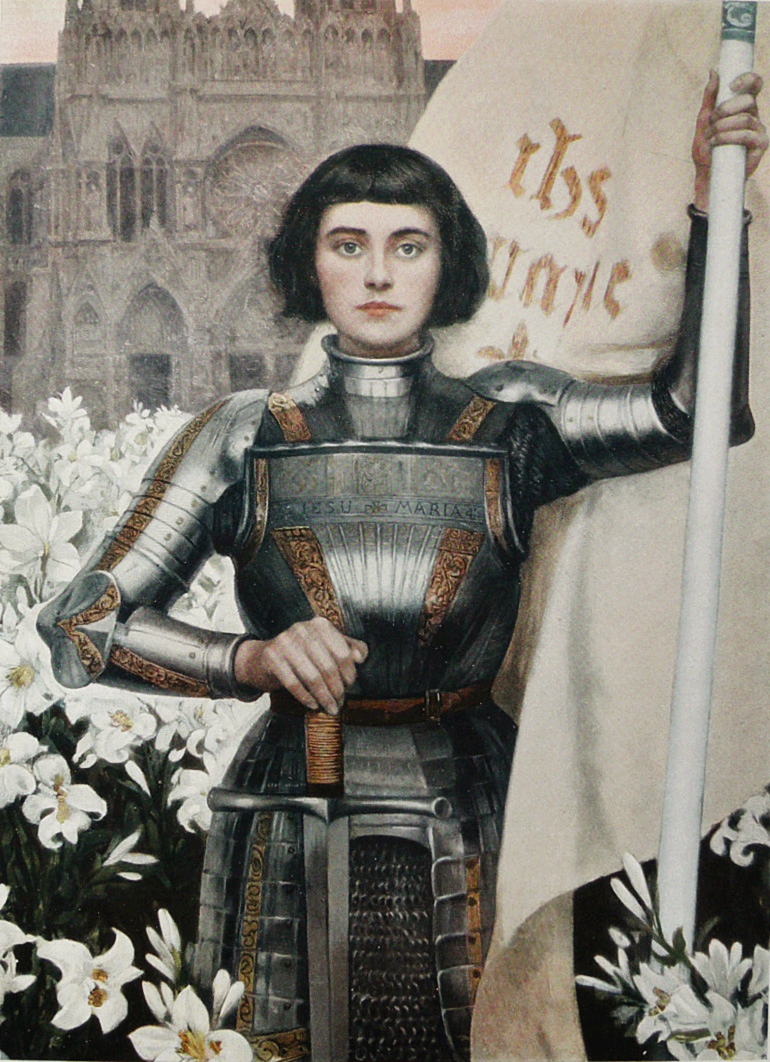
Joan was viewed as a religious figure in Orléans after the siege was lifted, and an annual panegyric was pronounced there on her behalf until the 1800s. In 1849, the Bishop of Orléans, Félix Dupanloup, delivered an oration that attracted international attention, and in 1869, he petitioned Rome to begin beatification proceedings. She was beatified by Pope Pius X on April 18, 1909, and canonized on May 16, 1920, by Pope Benedict XV. Her feast day is May 30, the anniversary of her execution. In an apostolic letter, Pope Pius XI declared Joan one of the patron saints of France on March 2, 1922.
Joan was canonized as a Virgin, not specifically as a Christian martyr, because she had been put to death by a canonically constituted court, which executed her not for her faith in Christ, but for her private revelation. Nevertheless, she has been popularly venerated as a martyr since her death: one who suffered for her modesty and purity, her country, and the strength of her convictions. Joan is also remembered as a visionary in the Church of England with a commemoration on May 30. She is revered in the pantheon of the Cao Dai religion.
During her lifetime, Joan was already being compared to biblical women heroes, such as Esther, Judith, and Deborah. Her claim of virginity, which signified her virtue and sincerity, was upheld by women of status from both the Armagnac and Burgundian-English sides of the Hundred Years' War: Yolande of Aragon, Charles's mother-in-law, and Anne of Burgundy, Duchess of Bedford.
6.3. Symbol of France
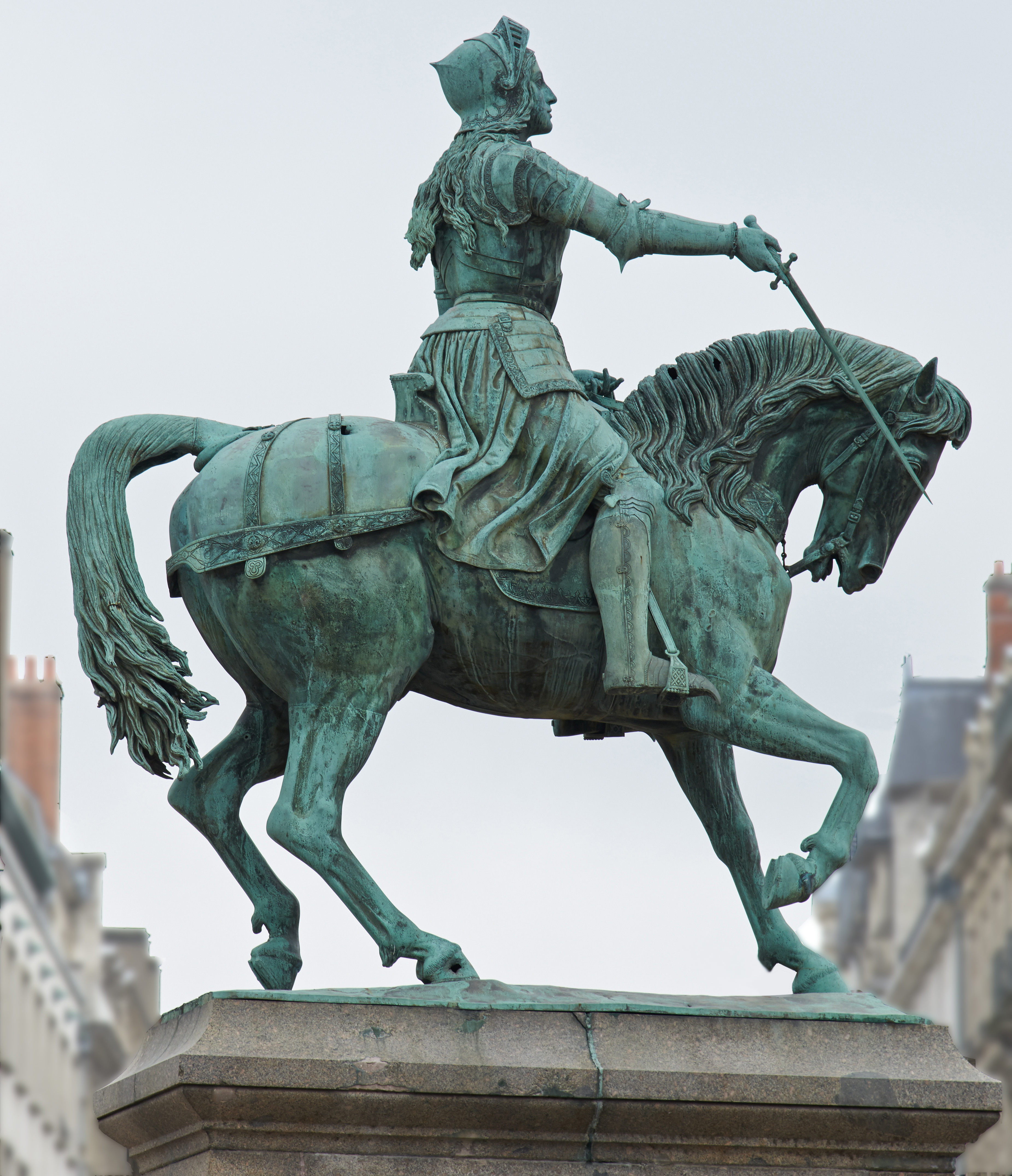
Joan's reputation as a military leader who helped drive the English from France began to form even before her death. Just after Charles's coronation, Christine de Pizan wrote the poem Ditié de Jehanne D'Arc, celebrating Joan as a supporter of Charles sent by Divine Providence and reflecting French optimism after the triumph at Orléans. As early as 1429, Orléans began holding a celebration in honor of the raising of the siege on May 8.
After Joan's execution, her role in the Orléans victory encouraged popular support for her rehabilitation. Joan became a central part of the annual celebration, and by 1435, a play, Mistère du siège d'OrléansFrench (Mystery of the Siege of Orléans), portrayed her as the vehicle of the divine will that liberated Orléans. The Orléans festival celebrating Joan continues in modern times.
Less than a decade after her rehabilitation trial, Pope Pius II wrote a brief biography describing her as the maid who saved the kingdom of France. Louis XII commissioned a full-length biography of her circa 1500. Joan's early legacy was closely associated with the divine right of the monarchy to rule France.
During the French Revolution, her reputation came into question because of her association with the monarchy and religion, and the festival in her honor held at Orléans was suspended in 1793. In 1803, Napoleon Bonaparte authorized its renewal and the creation of a new statue of Joan at Orléans, stating, "The illustrious Joan... proved that there is no miracle which French genius cannot accomplish when national independence is threatened."
Since then, she has become a prominent symbol as the defender of the French nation. After the French defeat in the Franco-Prussian War, Joan became a rallying point for a new crusade to reclaim Lorraine, the province of her birth. The Third Republic held a patriotic civic holiday in her honor on May 8 to celebrate her victory at Orléans. During World War I, her image was used to inspire victory. In World War II, all sides of the French cause appealed to her legacy: she was a symbol for Philippe Pétain in Vichy France, a model for Charles de Gaulle's leadership of the Free French, and an example for the Communist resistance. More recently, her association with the monarchy and national liberation has made her a symbol for the French far right, including the monarchist movement Action Française and the National Front Party. Joan's image has been used by the entire spectrum of French politics, and she remains an important reference in political dialogue about French identity and unity.
6.4. Cultural Impact
Joan is one of the most studied people of the Middle Ages, partly because her two trials provided a wealth of documents. Her image, changing over time, has encompassed roles such as the savior of France, an obedient daughter of the Roman Catholic Church, an early feminist, and a symbol of freedom and independence.
Joan has been described as a model of an autonomous woman who challenged traditions of masculinity and femininity to be heard as an individual in a patriarchal culture, setting her own course by heeding the voices of her visions. She fulfilled the traditionally male role of a military leader while maintaining her status as a valiant woman. Merging qualities associated with both genders, Joan has inspired numerous artistic and cultural works for many centuries. In the 19th century, hundreds of works of art about her-including biographies, plays, and musical scores-were created in France, and her story became popular as an artistic subject in Europe and North America. By the 1960s, she was the topic of thousands of books. Her legacy has become global, inspiring novels, plays, poems, operas, films, paintings, children's books, advertising, computer games, comics, and popular culture across the world.
Notable works inspired by Joan of Arc include William Shakespeare's play Henry VI, Part 1, Voltaire's poem La Pucelle d'Orléans, Friedrich Schiller's play Die Jungfrau von Orléans, Giuseppe Verdi's opera Giovanna d'Arco, Pyotr Ilyich Tchaikovsky's opera The Maid of Orleans, Mark Twain's novel Personal Recollections of Joan of Arc, George Bernard Shaw's play Saint Joan, and films such as Carl Theodor Dreyer's The Passion of Joan of Arc (1928), Victor Fleming's Joan of Arc (1948) starring Ingrid Bergman, and Luc Besson's The Messenger: The Story of Joan of Arc (1999) starring Milla Jovovich.
7. Clothing
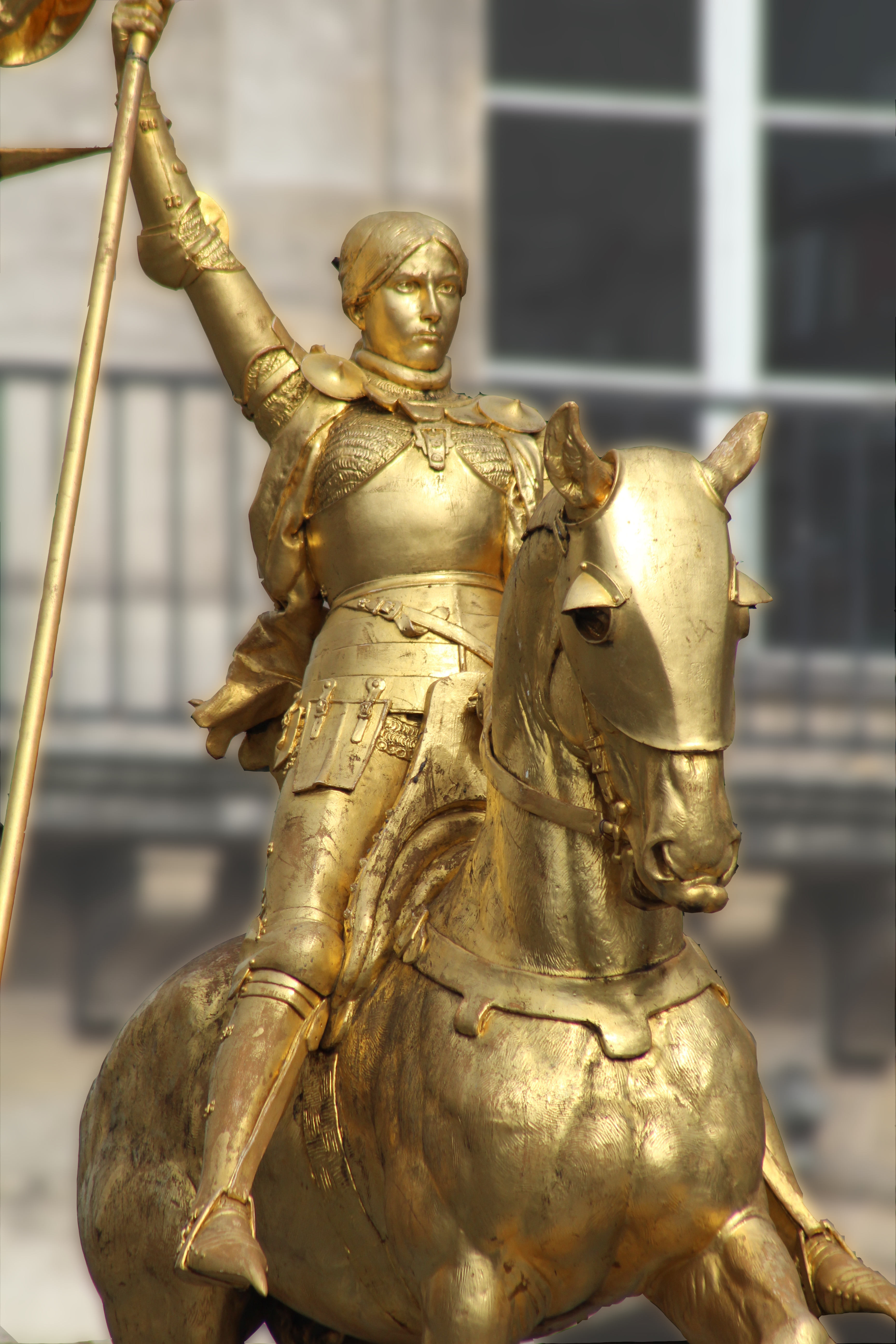
Joan's cross-dressing was the subject of five of the articles of accusation against her during the trial. In the view of the assessors, it was the emblem of her heresy. Her final condemnation began when she was found to have resumed wearing men's clothes, which was taken as a sign that she had relapsed into heresy.
From the time of her journey to Chinon to her abjuration, Joan usually wore men's clothes and cropped her hair in a male fashion. When she left Vaucouleurs to see the Dauphin in Chinon, Joan was said to have worn a black doublet, a black tunic, and a short black cap. By the time she was captured, she had acquired more elaborate outfits. At her trial, she was accused of wearing breeches, a mantle, a coat of mail, a doublet, hose joined to the doublet with 20 laces, tight boots, spurs, a breastplate, buskins, a sword, a dagger, and a lance. She was also described as wearing furs, a golden surcoat over her armor, and sumptuous riding habits made of precious cloth.
During the trial proceedings, Joan is not recorded as giving a practical reason why she cross-dressed. She stated that it was her own choice to wear men's clothes, and that she did so not at the request of men but by the command of God and his angels. She stated she would return to wearing women's clothes when she fulfilled her calling.
Although Joan's cross-dressing was used to justify her execution, the Church's position on it was not clear. In general, it was seen as a sin, but there was no agreement about its severity. Thomas Aquinas stated that a woman may wear a man's clothes to hide herself from enemies or if no other clothes were available. Joan did both, wearing them in enemy territory to get to Chinon, and in her prison cell after her abjuration when her dress was taken from her. Soon after the siege of Orléans was lifted, Jean Gerson said that Joan's male clothes and haircut were appropriate for her calling, as she was a warrior and men's clothes were more practical.
Cross-dressing may have helped her maintain her virginity by deterring rape: witnesses at the nullification trial stated that Joan gave this as one of the reasons for returning to men's clothes after she had abjured wearing them. However, scholars have stated that when she was imprisoned, wearing men's clothes would only have been a minor deterrent to rape as she was shackled most of the time. For most of her active life, Joan did not cross-dress to hide her gender. Rather, it may have functioned to emphasize her unique identity as La PucelleFrench, a model of virtue that transcends gender roles and inspires people.
8. Visions
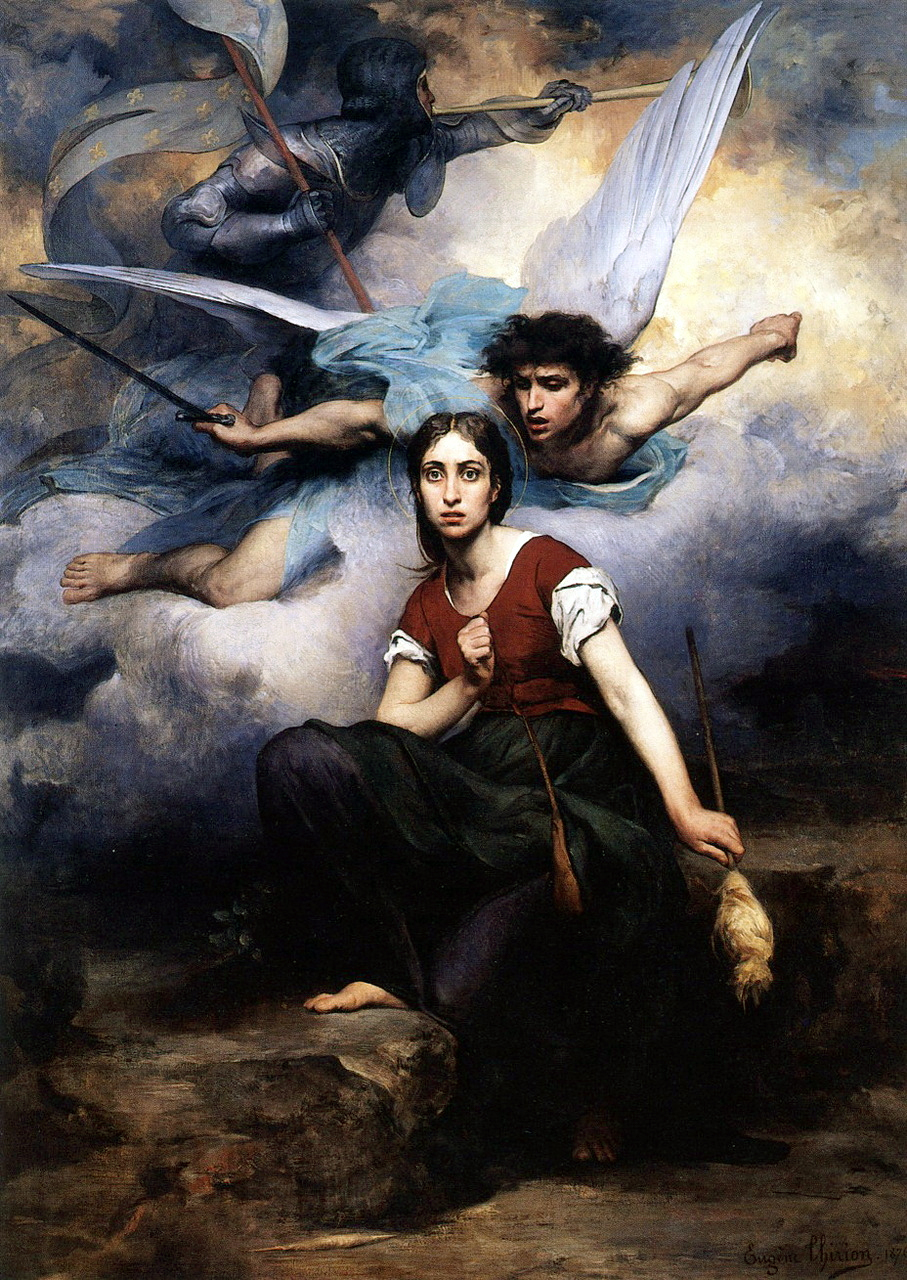
Joan's visions played an important role in her condemnation, and her admission that she had returned to heeding them led to her execution. Theologians of the era believed that visions could have a supernatural source. The assessors at her trial focused on determining the specific source of Joan's visions, using an ecclesiastical form of discretio spirituumLimburgan (discernment of spirits). Because she was accused of heresy, they sought to show that her visions were false. The rehabilitation trial nullified Joan's sentence, but did not declare her visions authentic. In 1894, Pope Leo XIII pronounced that Joan's mission was divinely inspired.
Modern scholars have discussed possible neurological and psychiatric causes for her visions. Her visions have been described as hallucinations arising from epilepsy or a temporal lobe tuberculoma. Others have implicated ergot poisoning, schizophrenia, delusional disorder, or creative psychopathy induced by her early childhood rearing. One of the Promoters of the Faith at her 1903 canonization trial argued that her visions may have been manifestations of hysteria. Other scholars argue that Joan created some of the visions' specific details in response to the demands of the interrogators at her trial.
Many of these explanations have been challenged; for example, some scholars point out problems with assuming Joan had schizophrenia, ergot poisoning, or temporal lobe issues. Others dispute the conjecture that she had epilepsy or that her visions were caused by tuberculosis. One of Joan's advocates at the canonization trial pointed out that her case did not meet the clinical descriptions of hysteria. Furthermore, trial records designed to demonstrate that Joan was guilty of heresy are unlikely to provide the objective descriptions of symptoms needed to support a medical diagnosis.
Joan's firm belief in the divinity of her visions strengthened her confidence, enabled her to trust herself, and gave her hope during her capture and trial.
9. Relics
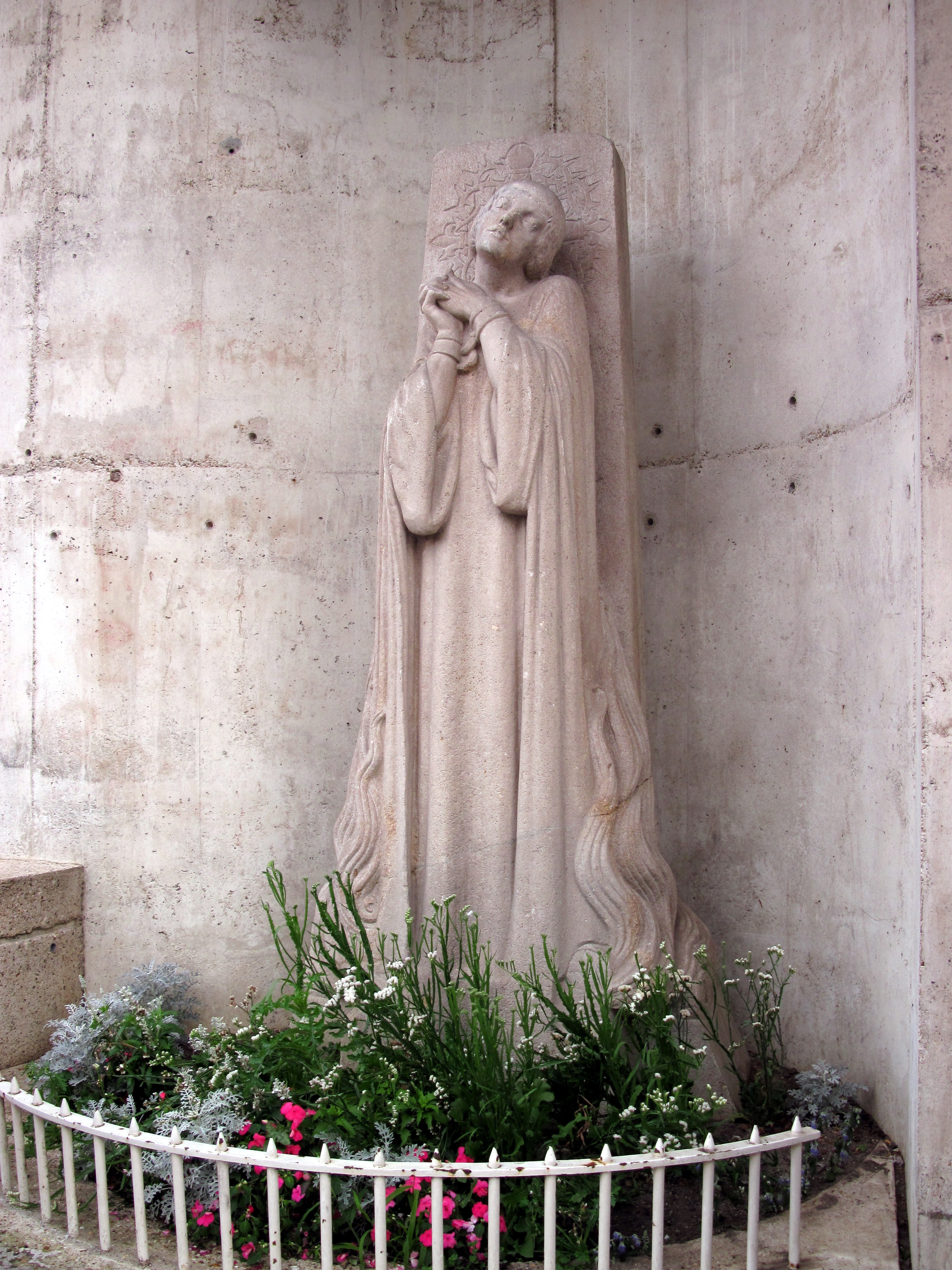
In 1867, a flask was reportedly discovered in a Parisian pharmacy with an inscription claiming it contained "remains found under the pyre of Joan of Arc, Virgin of Orléans." The flask contained charred human ribs, carbonized wood, a piece of linen, and a cat's femur, which was believed to be from a black cat thrown into the fire during the execution of a witch. These purported relics are currently housed in the Chinon Museum.
In 2006, French paleopathologist and forensic scientist Philippe Charlier of Raymond-Poincaré Hospital initiated a six-month study of these remains. Using radiocarbon dating and various spectroscopic analyses, the study concluded that the contents of the flask were in fact from an Egyptian mummy dating from the 6th to 3rd centuries BCE. The black appearance of the remains was attributed to the embalming substances used, not burning. The presence of large amounts of pine pollen also supported the mummy theory, consistent with the use of pine resin in embalming. The unburnt linen fragments were similar to those used in mummy wrappings. Perfumers from Guerlain and Jean Patou had previously noted a vanilla scent from the relics, which is consistent with the decomposition of flesh. It is believed that these relics, originally medicinal mummy components, were falsely labeled during a period of rising French nationalism.